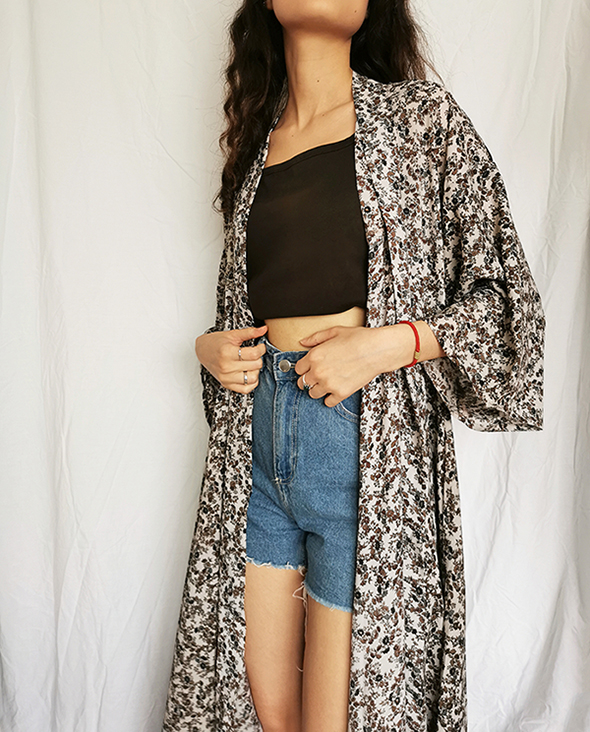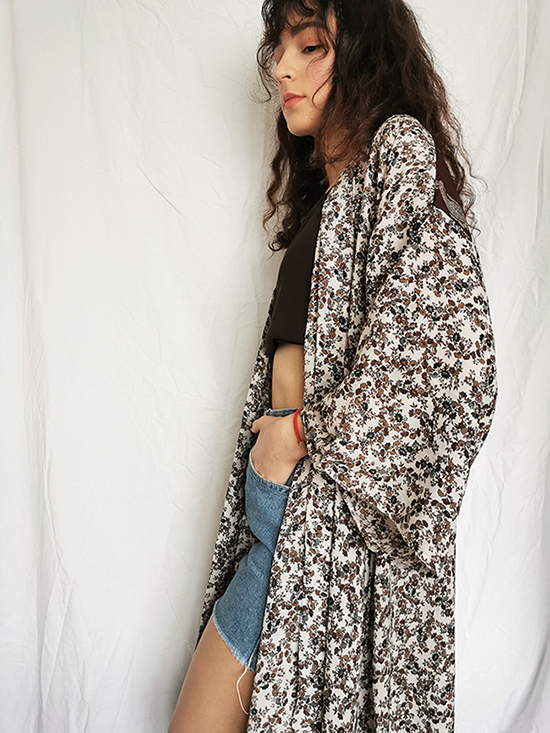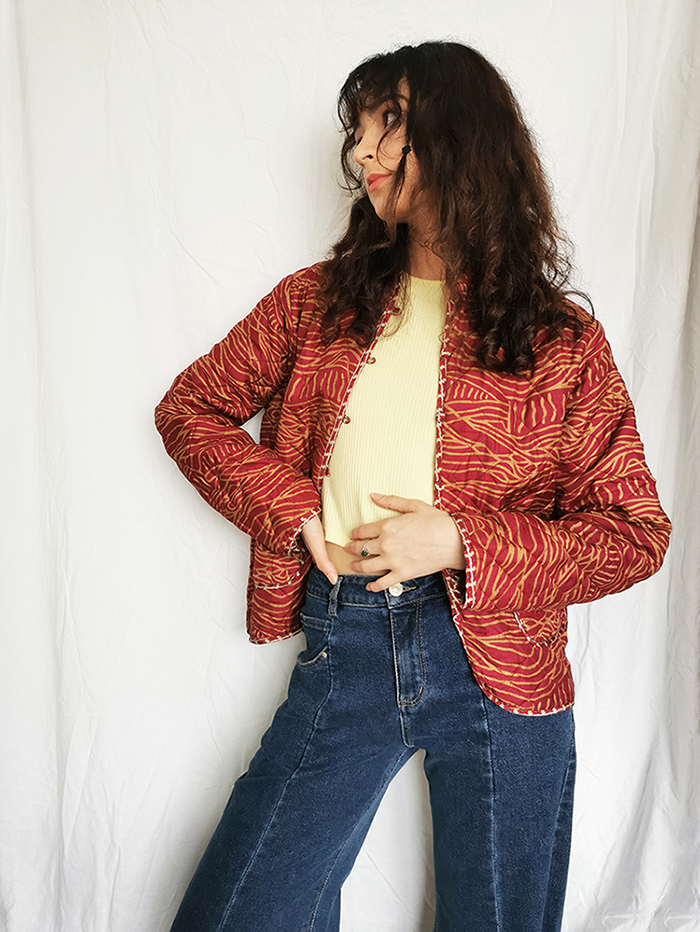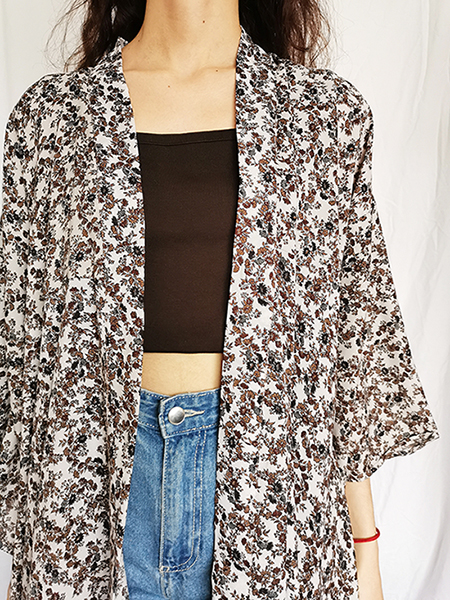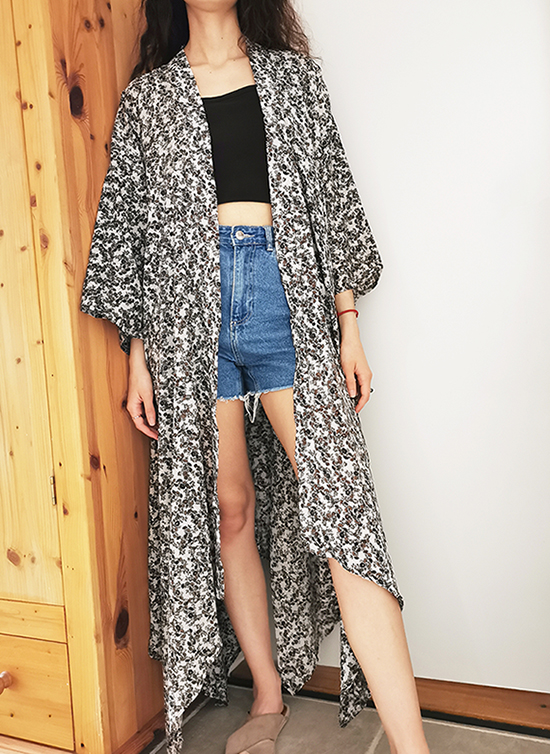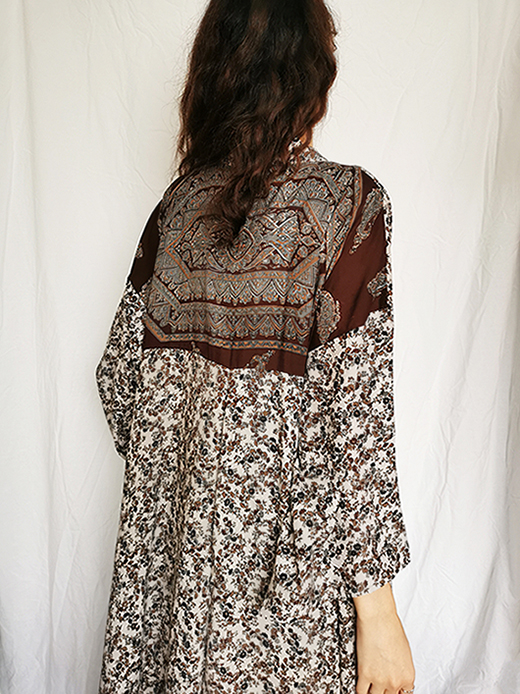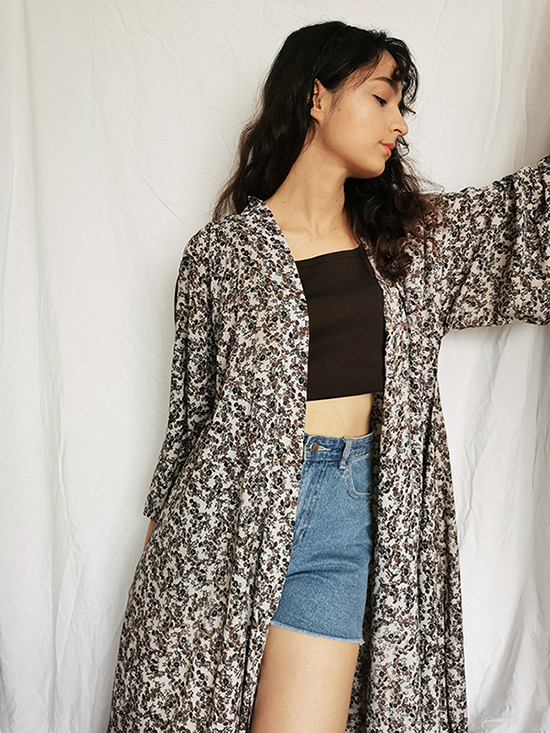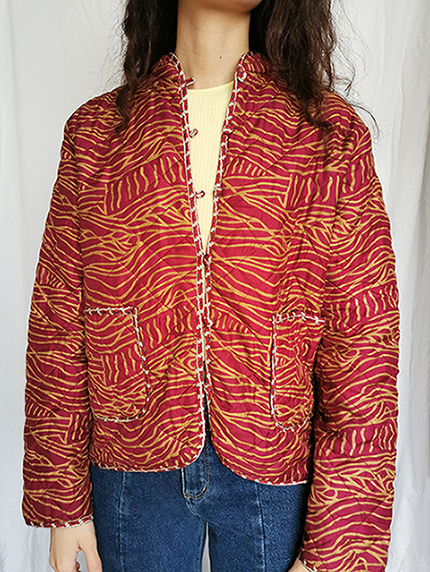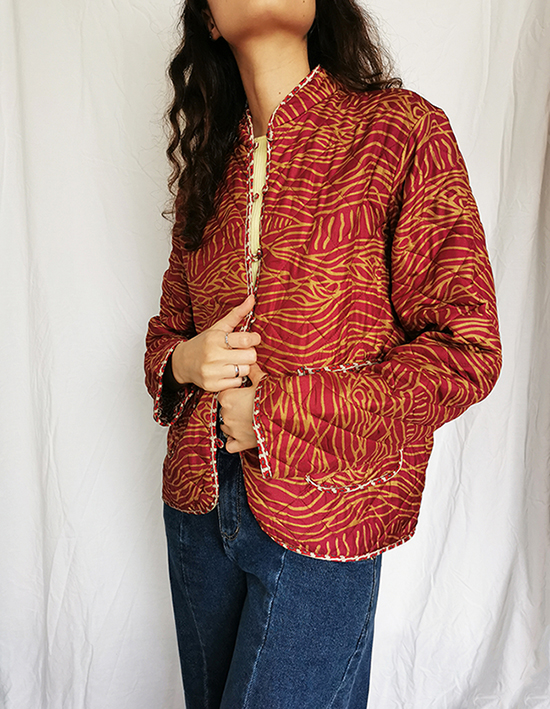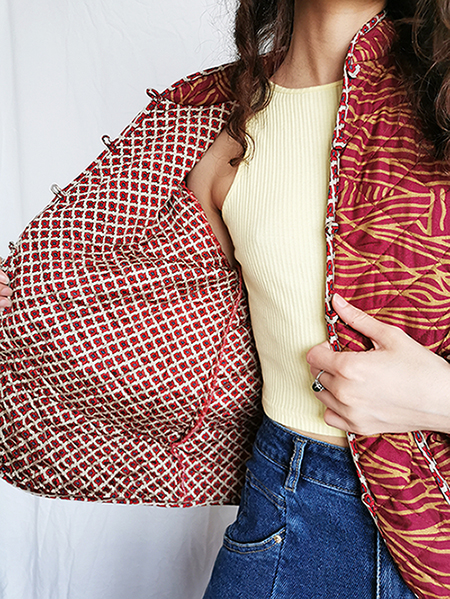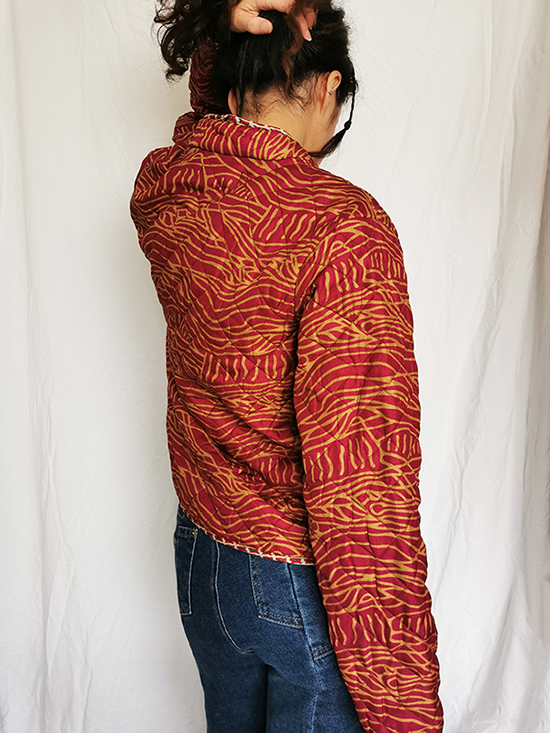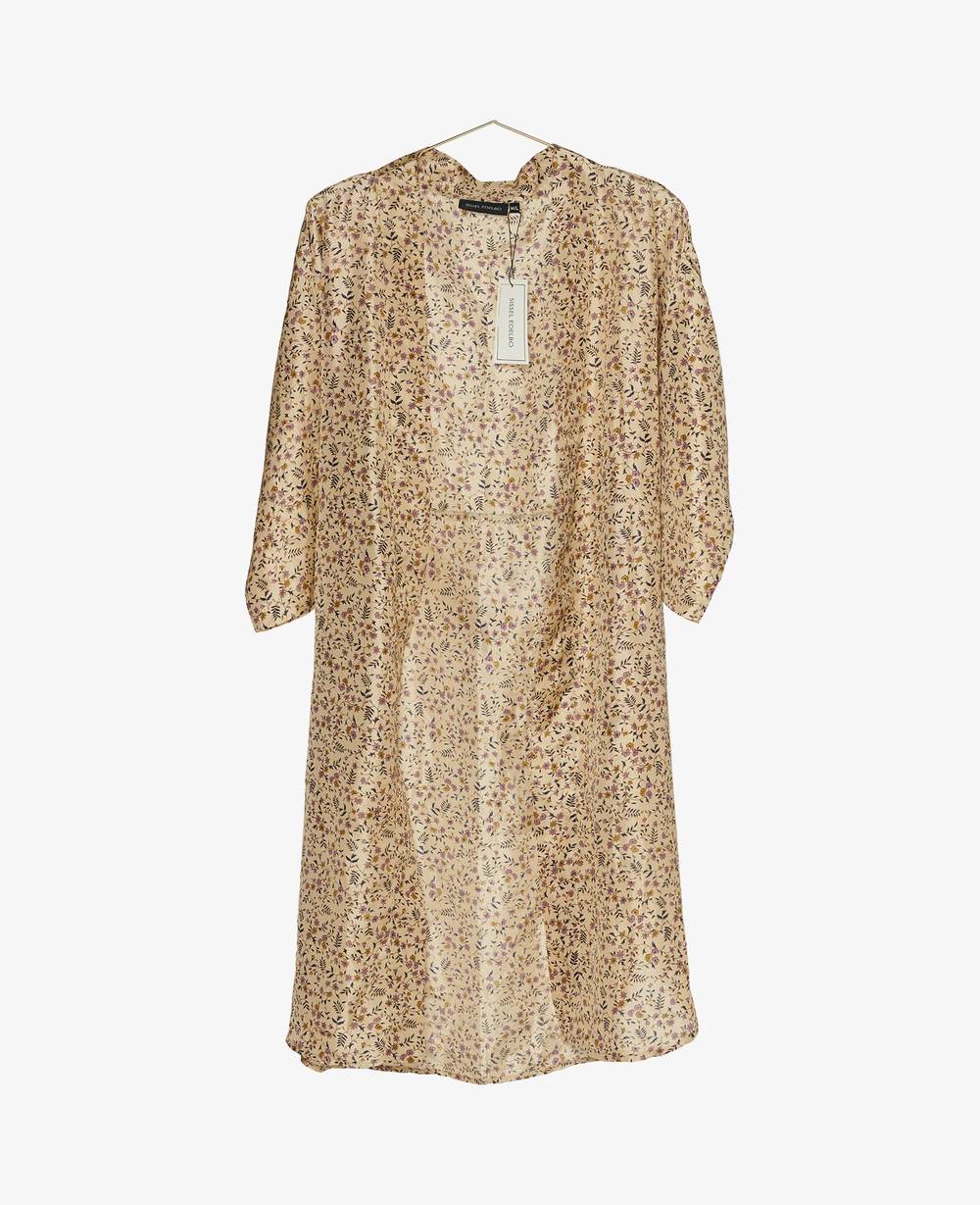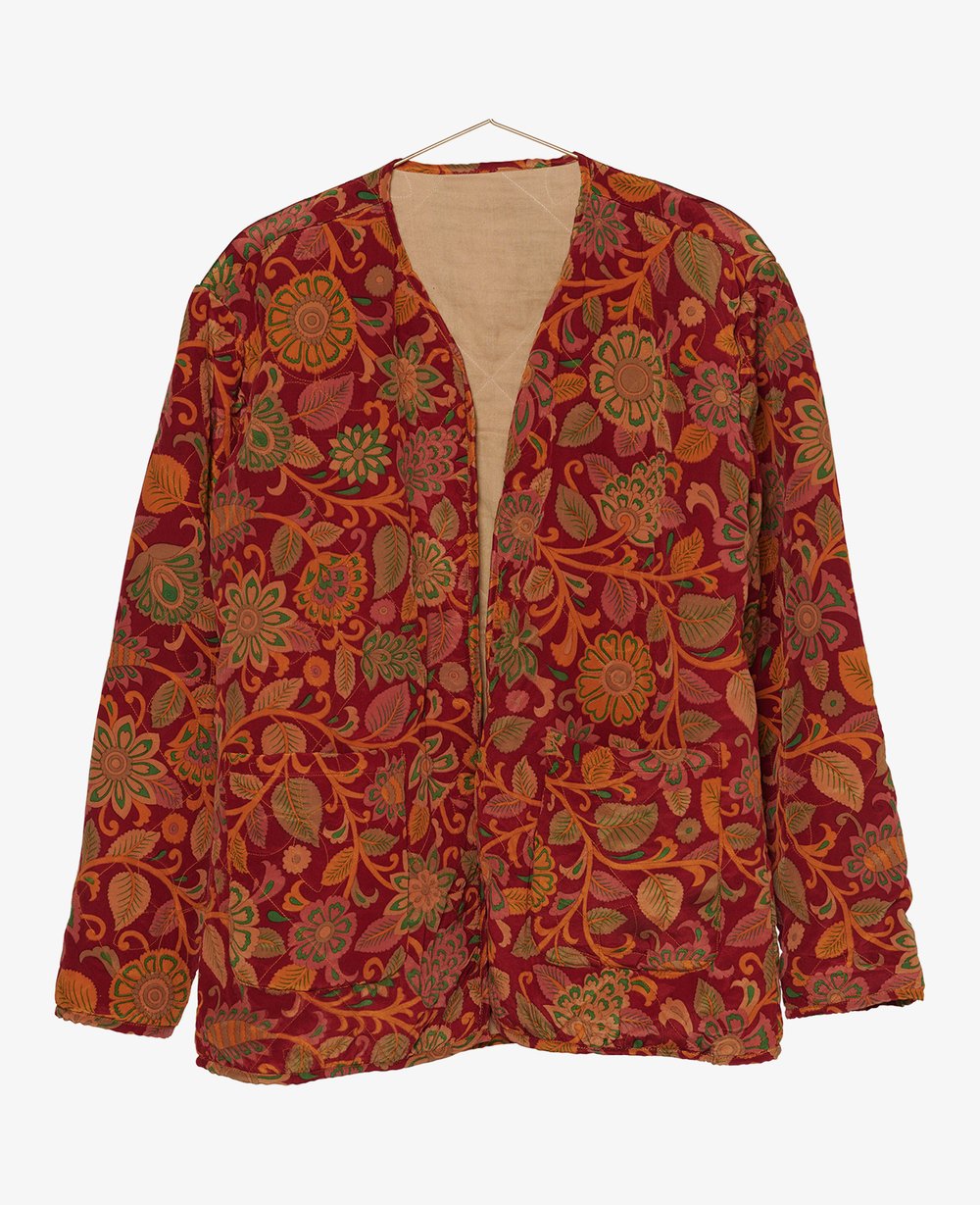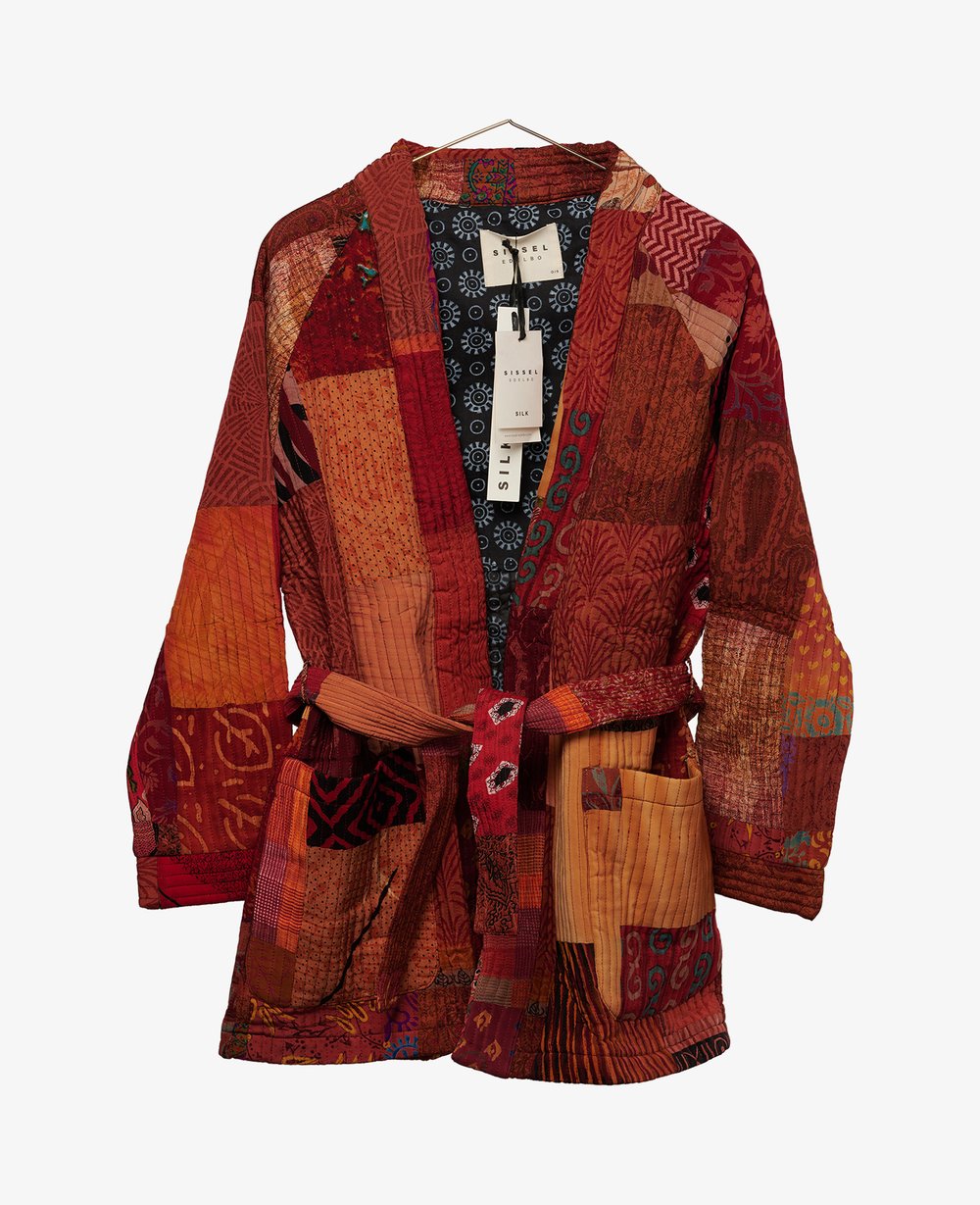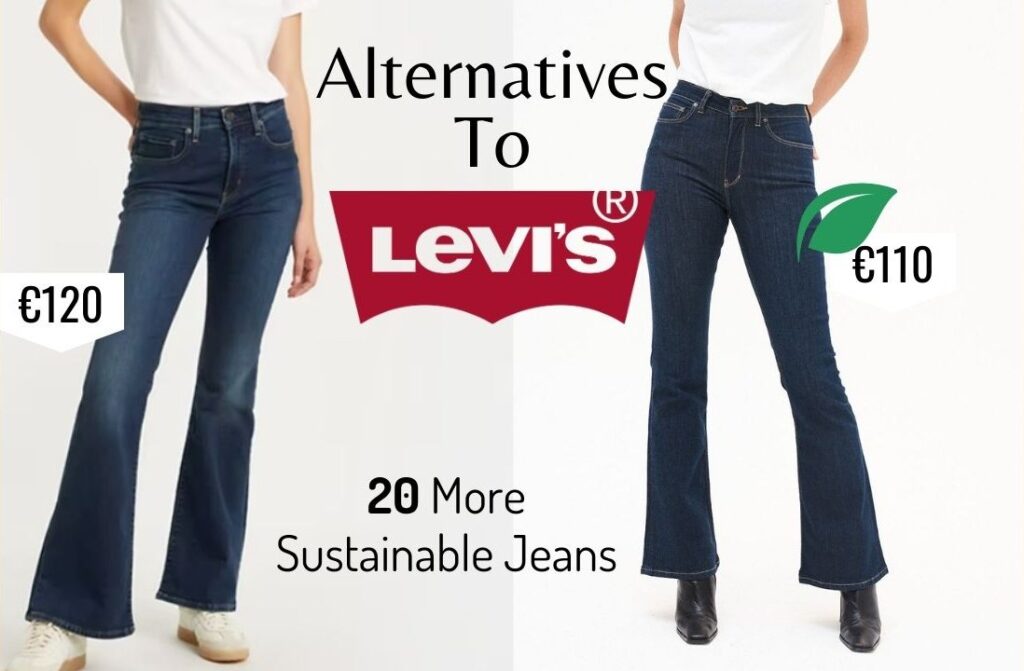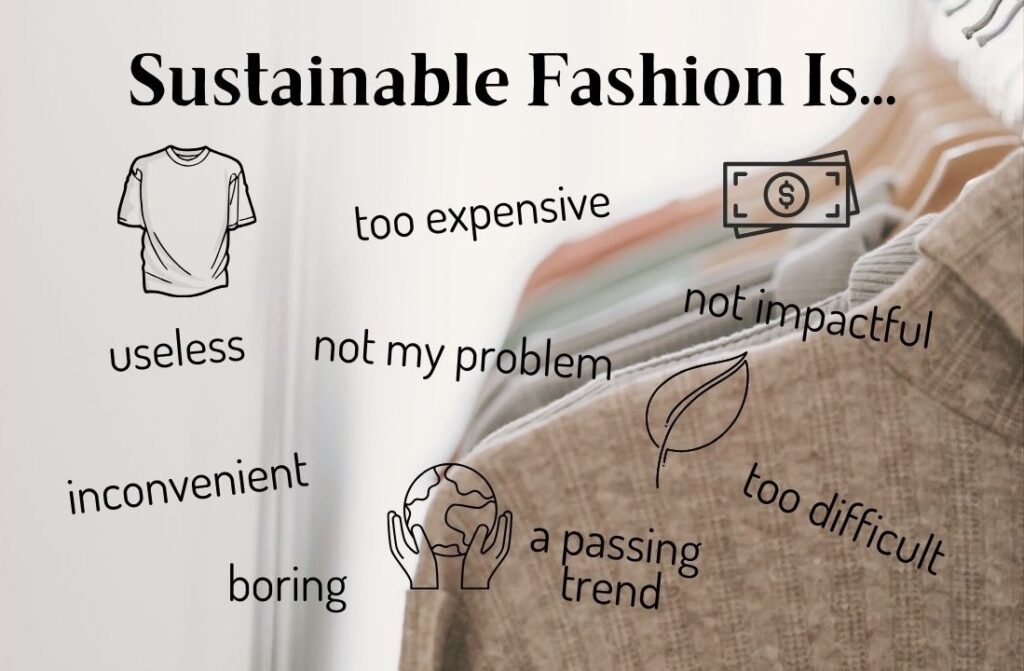SISSEL EDELBO is a Danish brand who repurpose Indian sari’s. Using upcycled materials is one of the most sustainable material choices you can make. When someone is done wearing a garment, it often ends up in landfill or it gets burned. Brands like this are therefore needed to give garments a second life and extend their lifecycles as much as possible.
I bought two items from them a while ago. In this review, I’m going to give my thoughts and touch on the brand’s sustainability practices.
Material
They mention on the website they don’t always know the composition of the materials because sari’s don’t have care labels. They say sari’s can have different compositions made of cotton, polyester, viscose or silk.
The two items I have, definitely feel like polyester to me (or maybe a mix with another synthetic material). I am personally not a big fan of synthetics because of their characteristics and negative environmental impact (even if it’s repurposed). However, I barely meet other people who share this preference, so I’m guessing you probably won’t really mind this detail. The fact that it’s repurposed already makes it very sustainable.
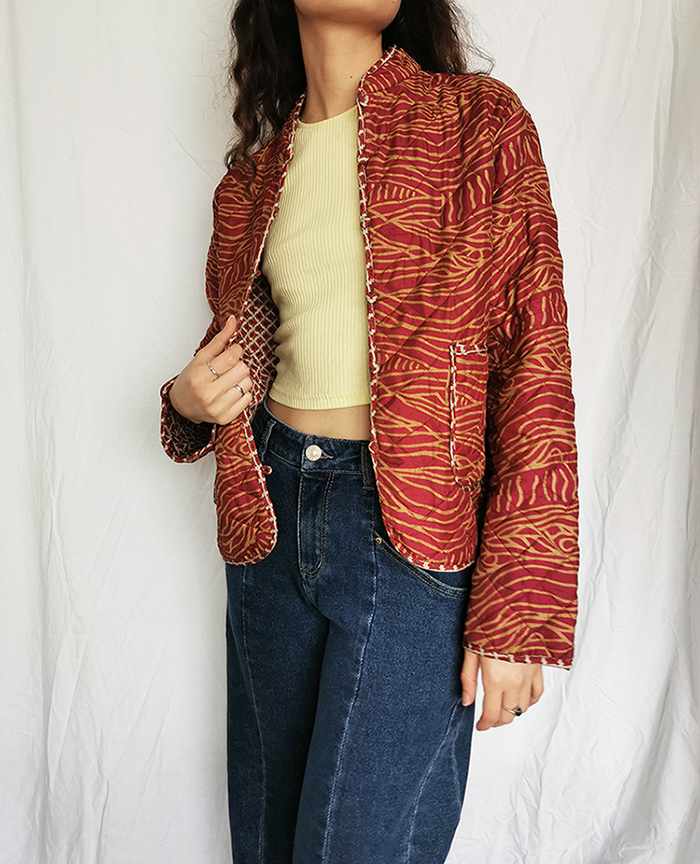
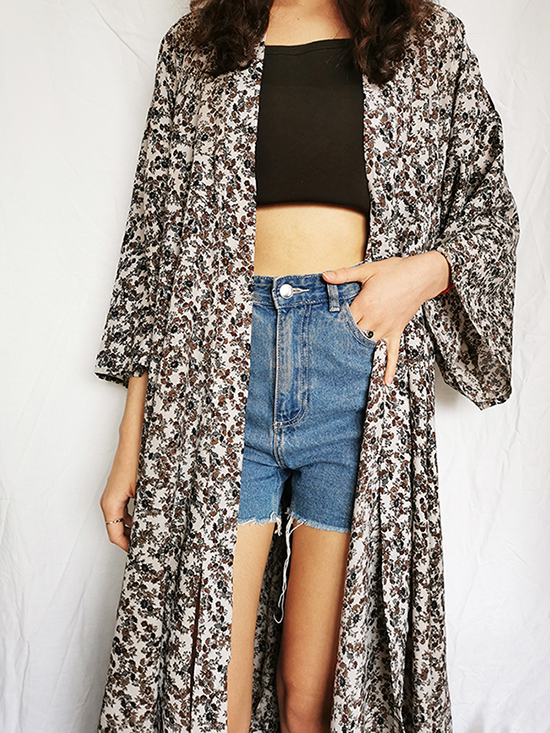
Prints
The brand offers a lot of print and colour options and they are different each season (because you never know which sari you will find). As a libra, this resulted in a lot of indecisiveness while trying to pick between all those prints. If you’re not so much into busy prints and your style is more minimalistic, they also have some uni-coloured or very simple prints, don’t worry 😉
A great thing about the fabrics is that they are already dyed which means the brand doesn’t add to the negative environmental impact that results from dyeing and simply uses dyed garments that would otherwise be thrown away.
Sizing
A lot of their garments are one size (as well as the kimono I’m wearing in this post). If they do have sizes, they offer S/M or M/L (like the jacket I’m wearing). I know ‘one size fits all’ isn’t appreciated by everyone, but it is a very sustainable design concept as it results in less leftover garments because the brand doesn’t have to guess how many of each size are needed. By using flowy and oversized designs and by adding elements that allow the user to wrap the garment however tight they want, the garments are available for a range of different body types. They also add the measurements of every garment so you can make sure it will fit before you order.
Other sustainability practices

They use Indian sari’s and the garments are manufactured in India. This is a good thing because it means the fabrics don’t have to be transported to another country to be manufactured into clothes (as is the case for many brands). The fabrics and the suppliers are all in the same country.

They claim they visit their suppliers several times a year and they ensure the employees have good working conditions. However, it would be better if their suppliers had some certificates or were externally audited so that there would be some kind of proof to support their claims. Right now, all we can do is either believe it or not.

Repurposing sari’s already contributes to a circular system but they don’t stop there. They also use the leftovers from their cutting process to make patchwork items or accessories. This is something that – in my opinion – every brand should do.
Final thoughts
SISSEL EDELBO’s items are a must for your summer wardrobe. Their kimonos are perfect for throwing over any summer outfit or even your swimsuit while you take a quick break from swimming to get a drink. Their jackets can be worn during chilly summer evenings or even during the winter time as part of your outfit. Regarding sustainability, they have made a lot of improvements on transparency this past year. They have recently added a lot more information on their practices. However, they could still be a bit more open about their workers and manufacturers and perhaps join organizations that conduct external audits. Overall, if you’re not picky with what kind of fabrics you wear and you love Indian prints, you should definitely check this brand out!
Shop similar items
Since the items I tried in this post are from a previous season, they are both not sold anymore, but scroll down to see some similar items from their current collection or feel free to head to their website directly by clicking here.
Or click here to learn more about the brand.

